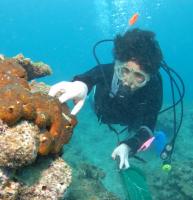Research Experience
-
2012.04-Now
Waseda University
-
2007.04-2012.03
Waseda University Faculty of Science and Engineering
-
2004-2007.03
The University of Tokyo Graduate School of Agricultural and Life Sciences
-
1996.06-2004
The University of Tokyo
-
1994.07-1996.09
University of Hawai'i Dept. Chemistry posdoc


Click to view the Scopus page. The data was downloaded from Scopus API in December 21, 2025, via http://api.elsevier.com and http://www.scopus.com .